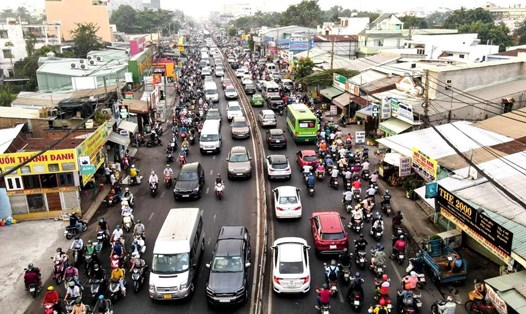On the afternoon of November 14, the Ho Chi Minh City Department of Transport held a conference to consult with parties on the pre-feasibility study report for five projects to upgrade and expand existing roads under the BOT (build-operate-transfer) model, applying the special mechanism of Resolution 98.
Including the project to upgrade and expand National Highway 1 (from Kinh Duong Vuong Street to Long An province border) with a length of 9.3 km.
According to the consulting unit's research report, there are two options proposed to expand this section of National Highway 1.
Option 1 includes expanding National Highway 1 into three main sections: The section from the end of An Lac intersection to the end of Tan Kien intersection (1.5 km) will be renovated and expanded to 60 m for 12 lanes; the section from the end of Tan Kien intersection to Ring Road 3 intersection (7 km) will expand the road surface to 60 m with 12 lanes; the section from Ring Road 3 intersection to the border of Long An province (0.8 km) will be 60 m wide for 10 lanes.
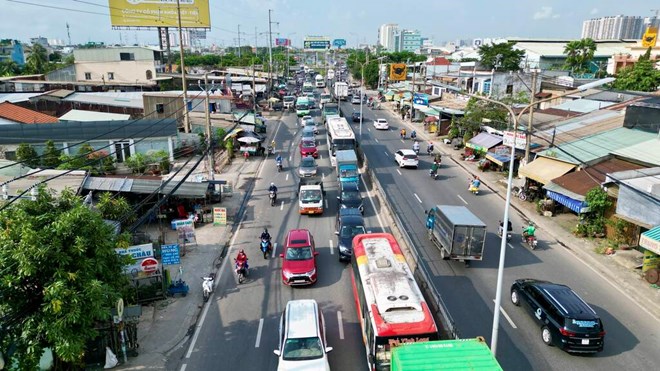
In addition, additional construction items include an overpass at the Doan Nguyen Tuan intersection, additional construction of Binh Dien and Binh Thuan bridges, and renovation of An Lac intersection. This project has a total estimated investment of about VND15,897 billion.
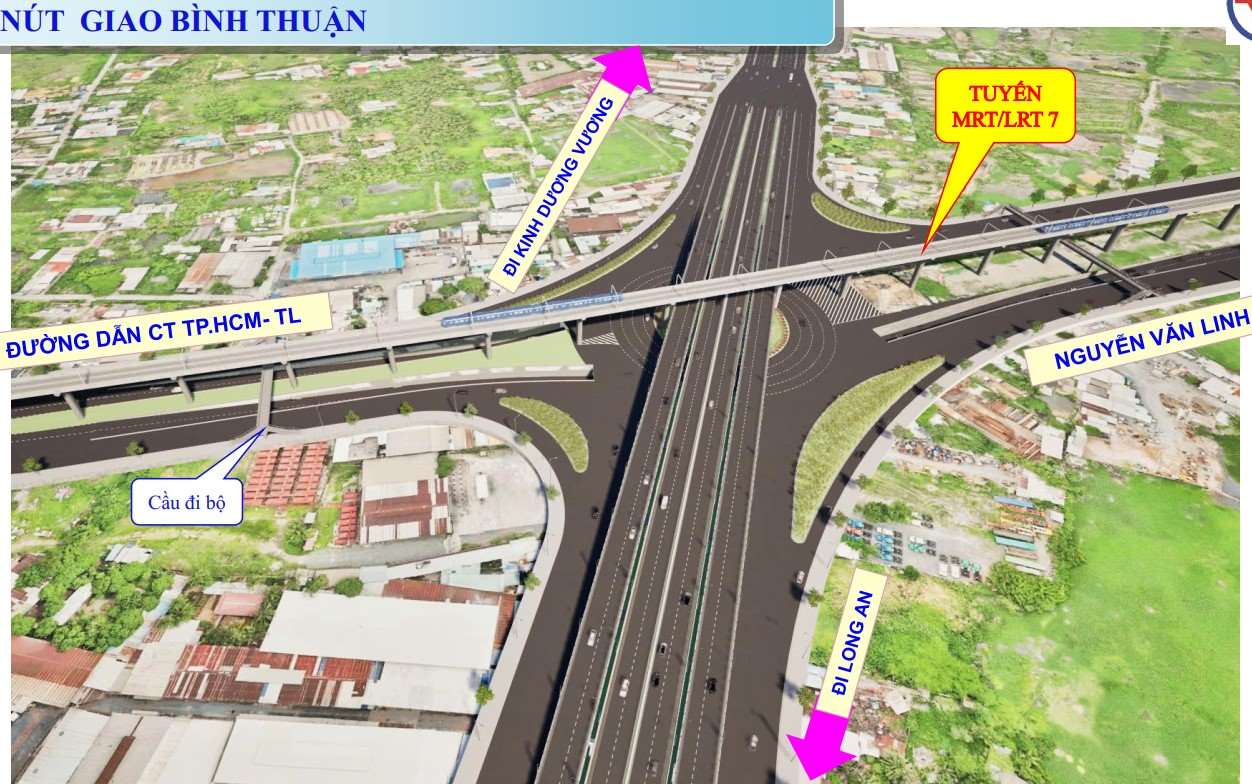
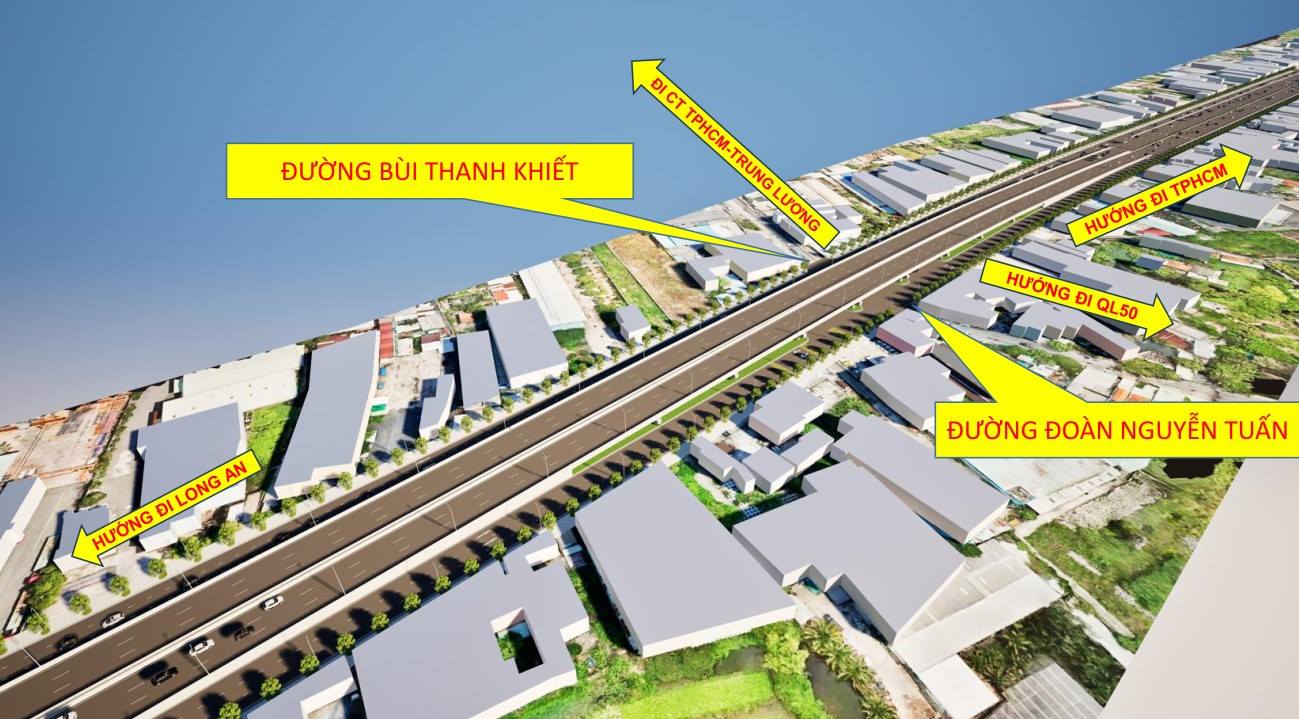
Option 2 proposes to build a 4-lane elevated road, with 8 lanes on the ground below. This option requires a larger capital source with a total investment of VND18,477 billion, an increase of about VND2,580 billion compared to the flat option.
Through comparing the two options, the consulting unit assessed that option 1 has outstanding advantages thanks to its ability to utilize the existing Binh Dien and Binh Thuan bridges, avoiding the need to dismantle and rebuild the bridge as in option 2.
Option 1, although the cost of site clearance is higher, the construction cost is cheaper, the construction is faster and less complicated than option 2 of building an elevated road.
After evaluating cost and efficiency factors, the consulting unit proposed choosing the option of expanding the entire National Highway 1 on the ground.
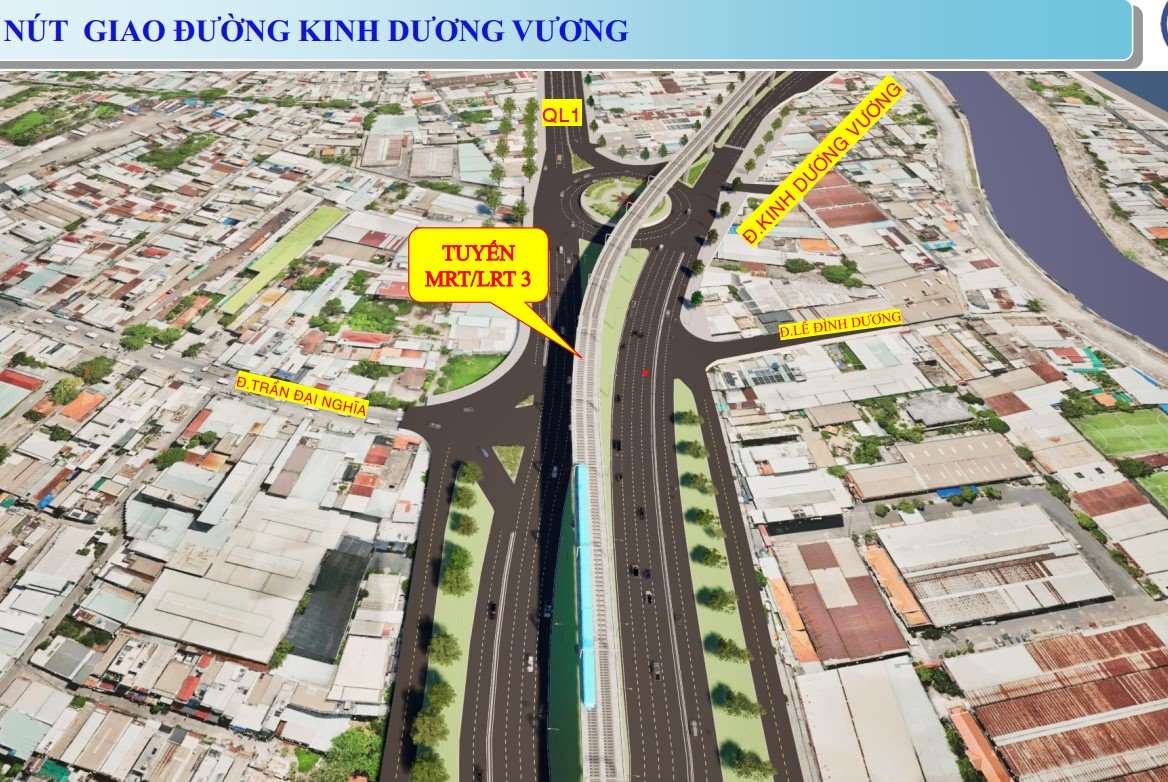
Of the total capital of VND 15,897 billion of this plan, about VND 5,462 billion will be mobilized from BOT capital (accounting for 33%), the rest will be supplemented from the state budget.
The project is expected to be implemented from 2025 to 2028.
After completion, the section of National Highway 1 through Binh Chanh District will be expanded to 10-12 lanes, which will help relieve traffic congestion at the western gateway of Ho Chi Minh City, reduce accidents and increase the efficiency of ongoing projects such as the North-South Expressway, Ring Roads 2, 3 and 4 of Ho Chi Minh City.
The section of National Highway 1 through Binh Chanh District is the main gateway from Ho Chi Minh City to the Mekong Delta, and is also the connecting section of many major roads such as Vo Van Kiet Avenue, Nguyen Van Linh, Ho Chi Minh City - Trung Luong Expressway, and is also the route leading to Mien Tay bus station.
During holidays and Tet, there is often serious traffic congestion on this section of highway when tens of thousands of people flock to the Western provinces and then return to Ho Chi Minh City after the holidays.
In addition to the traffic congestion caused by the narrow road surface, only 20-25 m wide with 4-6 lanes, this area also has the potential for accidents because this is the only section of National Highway 1 in Ho Chi Minh City that cannot yet be divided into a median strip to separate car and motorbike lanes.











